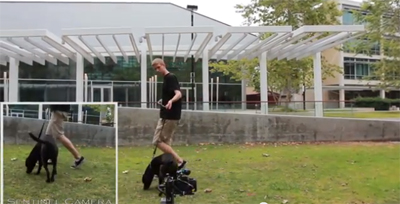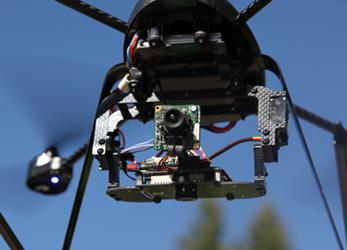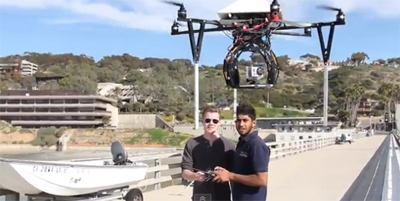UC San Diego Launches Summer Research Opportunity for Undergraduate Explorers
April 1, 2013 / By Emily Bass, Calit2
San Diego, Calif., April 1, 2013 -- From three-dimensional imaging of underwater artifacts to thermal imaging-based tracking of animals in the wild, the Engineers for Exploration program at the University of California, San Diego is continually seeking new ways to break down barriers in the world of exploration with UC San Diego’s partners in the program, the National Geographic Society, Hubbs SeaWorld Research Institute, and San Diego Zoo Global. Now, with support from a Research Experiences for Undergraduates (REU) grant awarded by the National Science Foundation (NSF) to program co-directors Ryan Kastner, Albert Yu-Min Lin, and Curt Schurgers, a new crop of undergraduate students will spend their summer in San Diego tackling real-world engineering challenges in exploration and scientific discovery.
|
This research initiative is the only such REU program on the UC San Diego campus funded by the NSF’s CISE directorate; it will build upon the structure of the existing Engineers for Exploration program, which matches upper-level UC San Diego undergraduates with a variety of high-tech research projects overseen by scientists, engineers, and explorers from the university and program partners. In the program’s first year, four REU slots will be filled by UC San Diego students, and an equal number of undergraduate researchers will be recruited for the summer from other institutions.
“This NSF funding will allow us to expand the Engineers for Exploration program to invite enthusiastic engineering and computer science majors from across the U.S. to come to San Diego to design and test their own research projects in the field,” said Kastner. “All of the undergrads will benefit from the guidance of existing undergraduate leaders in the program, graduate students, professors, and scientific mentors from our partner institutes.”
The 2013 Engineers for Exploration REU program is scheduled to run from June 20 to Aug. 29. Participants will be provided free room and board on-campus for the duration of the 10-week program, and will receive a $5,000 stipend for their work. The three-year program is expected to enroll additional participants each year beyond the initial eight undergraduates selected for the 2013 summer session.
|
“The students selected for our REU program will develop and try out in the field a number of exploration-themed technologies of their own design,” noted Kastner. “Through this program, students will learn that research is not just shown on paper, but can be used to explore the world around them.”
As part of this initiative, participants will work with research mentors based at UC San Diego and at Engineers for Exploration partner organizations. On the UC San Diego campus, participants will make use of the robust technological resources available at Calit2, including the institute’s StarCAVE and NexCAVE virtual-reality environments, and large-scale visualization systems. The program can also make available access to research labs in participating departments, including computer science, electrical and mechanical engineering, oceanography, and nanoengineering. High-definition videoconferencing will be used to connect participants with colleagues at National Geographic and at partner research institutions outside of the San Diego area.
|
It is this collaboration with scientists from program partners in San Diego and around the world that Engineers for Exploration REU coordinator Saura Naderi considers of paramount importance, as such teamwork will help program participants gain novel insights into the scientific process and the ins-and-outs of working in a research environment. “It’s rare for undergraduates to get to spend their summer working closely with scientists from some of the world’s top research institutions, let alone to plan and test out projects that they’ve created themselves,” said Naderi.
“Our program is intended to introduce students who are passionate about science -- especially those students who may not have easy access to scientific internships or research opportunities -- to the world of exploration through the wide reach of UC San Diego’s scientific community, and to increase the pipeline to graduate school,” Naderi added. “What we’re doing here is exciting because students have the chance to work on something that is both academically rigorous and fun.”
The application deadline for the 2013 REU program has passed, and students are expected to be notified of program acceptance in April. Information on applying for the 2014 REU activities will be available on the Engineers for Exploration REU website in January 2014.
By Emily Bass, Calit2
Related Links
UCSD-NGS Engineers for Exploration
Engineers for Exploration REU
Center of Interdisciplinary Science for Art, Architecture, and Archaeology
National Science Foundation Directorate for Computer and Information Science and Engineering
Media Contacts
Program Contact
Saura Naderi, 619-804-2356, snaderi@ucsd.edu
Media Contact
Doug Ramsey, 858-822-5825, dramsey@ucsd.edu




